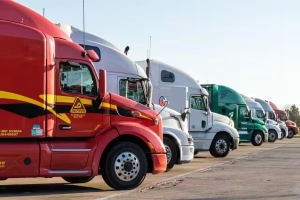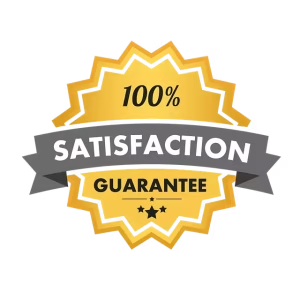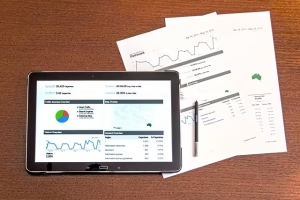The transient nature of pop-up retail presents a distinct marketing paradox. Success hinges on generating significant, immediate foot traffic, yet the limited operational window often precludes the slow build of traditional brand awareness campaigns. For many ventures in the pop-up retail space, the question is not just how to attract customers, but how to attract the right customers, right now. The solution lies not in casting a wide, inefficient net, but in deploying a precise, technology driven strategy. Understanding the application of geofencing provides a direct and measurable path to converting local digital presence into physical store visits.
This post will serve as a technical yet practical guide, detailing how to properly implement geofencing to drive tangible results for your pop-up retail business.
Foundational Concepts: Understanding Geofencing Technology
Before launching a campaign, it is essential to understand the tools you are using. Effective marketing is built on a solid foundation of knowledge. For a pop-up retail store, location is everything, and geofencing is the technology that turns location into your most powerful marketing asset.
What is Geofencing? A Technical Primer

At its core, geofencing is the creation of a virtual boundary, or a “fence,” around a specific real world location. Think of it like drawing an invisible circle or polygon on a map. This is done using mapping software. When a person with a smartphone enters or exits this pre defined area, it triggers a specific action. This action is usually the delivery of a targeted advertisement, a special offer, or a push notification directly to their mobile device.
This technology works by using a combination of signals from a person’s phone.
- GPS (Global Positioning System): This is the most accurate method. It uses signals from satellites to pinpoint a device’s exact location. It works best outdoors.
- Wi-Fi: In dense urban areas or inside buildings like malls, GPS signals can be weak. In these cases, phones can use the locations of known Wi-Fi networks to determine their position.
- Cellular Data: A phone’s location can also be estimated by which cell towers it is connected to. This is less precise than GPS but provides broad coverage.
When you set up a geofencing campaign, you are telling a platform, “When a mobile device that fits my target audience profile crosses this specific line on the map, show them my ad.” This makes it an incredibly powerful tool for a temporary pop-up retail location such as a vendor at an event or a food truck.
Geofencing vs. Geotargeting vs. Beacons: A Critical Distinction
The world of location based marketing has several key terms that are often confused. Understanding the difference is critical for choosing the right strategy for your pop-up retail shop. Each tool has a specific job. Using the wrong one is like using a hammer to turn a screw; it might work, but it will not be effective.
Here is a simple breakdown:
| Technology | What It Does | Best Use for Pop-Up Retail | Example |
| Geofencing | Triggers an action in real-time when someone enters or leaves a virtual boundary. | Driving new customers from nearby areas to your shop. | A person walks near your pop-up retail store and instantly gets an ad for “10% off for the next hour.” |
| Geotargeting | Delivers ads to people based on their location history or current general area. It is not always in real-time. | Reaching a broader audience who has shown interest in areas like yours. | An ad for your weekend pop-up retail boutique is shown to people who frequently shop in that neighborhood. |
| Beacons | Uses small Bluetooth devices to interact with phones at very close range (a few feet). | Engaging with customers while they are inside or right outside your shop. | A customer browsing inside your pop-up retail shop gets a notification about the specific product they are standing next to. |
For the primary goal of driving new foot traffic to your pop-up retail location, geofencing is the most direct and effective tool. It is designed for immediate action based on a person’s current, precise location.
The 5-Step Campaign Framework: From Setup to Execution
A successful geofencing campaign is not a matter of luck. It is a structured process that requires careful planning and execution. Following this five-step framework will ensure your efforts are efficient, measurable, and impactful for your pop-up retail success.
Step 1: Defining Campaign Objectives and Key Performance Indicators (KPIs)
Before you spend a single dollar, you must define what success looks like. Simply saying “I want more foot traffic” is not a business objective. You need specific, measurable goals. These are often called Key Performance Indicators, or KPIs.
For a pop-up retail business, your objectives might include:
- Goal: Increase daily visitors. KPI: Achieve 50 store visits per day attributed to the ad campaign.
- Goal: Be more cost effective than other ads. KPI: Achieve a Cost Per Visit (CPV) of less than $4.00. A CPV is the total ad spend divided by the number of people who visited after seeing the ad.
- Goal: Convert ad viewers into customers. KPI: Achieve a 10% conversion rate from store visit to actual purchase.
Setting clear KPIs from the start is the only way to know if your campaign is truly working and providing a positive return on investment. Without them, you are just guessing.
Step 2: Strategic Geofence Placement
Where you draw your virtual fences is the most critical decision in your campaign. The size and location of your geofence determine who sees your ads. An improperly placed or sized fence will waste your budget on people who are not likely to visit your location.
Consider these four types of strategic fences:
- Primary Fence: This is a tight circle or polygon drawn directly around your pop-up retail store. A radius of 200 to 500 meters is often effective, targeting people within a short walking distance.
- Competitor Conquesting Fences: This is an advanced tactic where you draw fences around your direct competitors’ locations. You can then show your ads to their customers, giving them a compelling reason to visit your pop-up retail shop instead. For example, if you have a gourmet donut pop-up retail shop, you could geofence a nearby Dunkin’ Donuts or Krispy Kreme.
- Complementary Fences: Think about businesses that attract your ideal customer but do not compete with you. If you are a pop-up retail shop selling athletic wear, you could geofence local gyms and yoga studios. If you sell books, geofence nearby coffee shops.
- Event Based Fences: Is there a concert, street festival, or farmers’ market happening near your pop-up retail location? Drawing a geofence around that event allows you to target a large, concentrated group of people who are already out and about.
Step 3: Audience Segmentation and Targeting
Geofencing tells you where people are, but that is only half the picture. You also need to target who they are. Most advertising platforms allow you to add layers of audience data on top of your geofences. This is called audience segmentation.
Instead of showing your ad to everyone who walks into the fence, you can narrow it down. For example, a pop-up retail boutique selling high end women’s fashion could target:
- Location: People within a 500 meter geofence.
- Demographics: Women, ages 30-55.
- Interests: People who have shown interest in luxury brands, fashion magazines, and online boutiques.
- Behavior: People who have made online purchases in the past month.
The more you can refine your audience, the more effective your ad spend will be. You will be showing your message only to the people most likely to be interested in your pop-up retail store.
Step 4: Crafting Irresistible, Location-Aware Creative
Once you have targeted the right person in the right place, you need to show them the right message. The ad creative, which includes the text and images, must be compelling enough to make someone change their plans and walk into your pop-up retail shop.
Here are best practices for geofencing ad creative:
- Create Urgency: Since pop-up retail is temporary, use that to your advantage. Phrases like “Here for this weekend only!” or “Offer ends at 5 PM today!” encourage immediate action.
- Offer Exclusivity: Make people feel special for seeing the ad. “Show this ad at checkout for a free gift” or “Unlock a secret 20% discount” makes the ad feel like a valuable discovery.
- Highlight Proximity: Remind them how close they are. “You’re just around the corner from our pop-up retail event!” or “Feeling hungry? Our food truck is 2 minutes away on Main St.”
- Use a Clear Call to Action (CTA): Tell people exactly what you want them to do. Use strong action verbs like “Get Directions,” “Visit Us Now,” or “Claim Your Offer.”
Your ad is competing for a few seconds of attention on a phone screen. It must be clear, concise, and offer immediate value.
Step 5: Platform Selection and Budgeting
Several platforms offer geofencing capabilities. For a small pop-up retail business, the most accessible are often major social media and search platforms.
- Meta (Facebook & Instagram): Offers user friendly location targeting options. It is excellent for businesses with a strong visual appeal.
- Google Ads: Allows for sophisticated location targeting and can capture people who are actively searching for products you sell.
- Specialized Platforms: Companies like GroundTruth or Simpli.fi are dedicated geofencing experts. They can offer more advanced features like detailed visit attribution but may require a larger budget.
When it comes to budgeting, most platforms operate on a CPM model, which means Cost Per Mille, or the cost per 1,000 ad impressions (views).14 A typical CPM for a targeted mobile ad campaign might be in the range of $5 to $15. The key is to monitor your Cost Per Visit (CPV) to ensure the campaign is profitable for your pop-up retail business. You do not need a massive budget to start; a few hundred dollars can be enough to run a test campaign for a weekend pop-up retail event.
Advanced Tactics and Performance Optimization

Once you have mastered the basics, you can apply more advanced tactics to maximize the impact of your campaigns and get an edge on the competition. These strategies are especially useful for the fast paced environment of pop-up retail.
Leveraging Dayparting and Dwell Time
- Dayparting: This is the practice of scheduling your ads to run only during specific times of day or days of the week. A pop-up retail coffee cart has no reason to run ads at 9 PM. It should concentrate its budget from 7 AM to 11 AM when people are looking for their morning coffee. A food truck should focus its ad spend during lunch (11 AM – 2 PM) and dinner (5 PM – 8 PM) rushes. Dayparting ensures your money is spent only when your target audience is most likely to act.15
- Dwell Time: This powerful filter allows you to target people based on how long they stay within a geofence. For competitor conquesting, targeting someone who enters and immediately leaves a competitor’s store is not very useful. However, targeting someone who has dwelled there for 20 minutes or more indicates they are a serious shopper and a high value target for your ad. This improves the quality of your audience.
Retargeting and Sequential Messaging
What happens to the people who saw your ad, entered your geofence, but did not visit your pop-up retail store? You should not give up on them. Retargeting allows you to create an audience list of these individuals. You can then show them a different follow up ad later in the day or the next day.
This is called sequential messaging.
- Message 1 (Initial Contact): “Visit our pop-up retail shop today for 15% off!”
- Message 2 (Retargeting): “Still thinking about it? Our pop-up is closing soon! Don’t miss out on our exclusive collection.”
This technique keeps your pop-up retail brand top of mind and gives potential customers a second or third chance to visit. It takes, on average, several brand interactions before a customer makes a purchase, and retargeting automates this process.
Measurement, Attribution, and Avoiding Common Pitfalls

Launching a campaign is only half the battle. The other half is measuring its performance, understanding the data, and making improvements. A key advantage of geofencing for pop-up retail is that everything is measurable.
Analyzing Your Footfall Data: Beyond the Click
The most important metric for a geofencing campaign is not clicks; it is verified store visits. This is called footfall attribution. Platforms track this by observing if a user who was shown your ad later appeared at your pop-up retail location’s physical address.
When you look at a campaign report, you should be able to see:
- Which geofences sent the most visitors.
- Which ad creative resulted in the most visits.
- What time of day was most effective.
- The total number of visits and your Cost Per Visit.
This data is invaluable. It tells you exactly what is working and what is not, allowing you to optimize your campaign in real time for your pop-up retail business.
Common Mistakes in Pop-Up Geofencing
Many businesses make simple, avoidable mistakes when they start with geofencing. Being aware of them can save you time and money.
- The Fence is Too Large: It can be tempting to draw a huge fence to reach more people. This is a mistake. It wastes money on people who are too far away to realistically visit your pop-up retail shop. Keep your fences tight and relevant.
- Vague Offer and CTA: An ad that says “New Pop-Up Retail Shop Nearby” is not compelling. An ad that says “Get a Free Tote Bag with any purchase in the next 2 hours, Get Directions Now!” is compelling. Be specific and give people a clear reason to act.
- Ignoring the Analytics: The data in your campaign reports is a roadmap to success. If you are not checking it regularly and making adjustments, you are flying blind. If one ad is performing poorly, turn it off. If one geofence is driving all your traffic, put more budget toward it.
- The “Set It and Forget It” Mentality: A geofencing campaign, especially for a short term pop-up retail event, requires active management. Monitor it, optimize it, and adapt to what the data is telling you.
Conclusion: Geofencing as a Non-Negotiable Tool for Pop-Up Success
For the modern pop-up retail entrepreneur, geofencing is no longer a novelty; it is a fundamental tool for success. It offers a level of precision, measurability, and timeliness that traditional advertising methods simply cannot match. This technology directly addresses the core challenge of any pop-up retail business by providing a direct line to potential customers who are in the immediate vicinity and have a high intent to purchase. By moving beyond guesswork and embracing a data driven approach, you can turn your physical location into a magnet for foot traffic, ensuring your temporary venture has a lasting impact.
For a detailed analysis of how geofencing can be tailored to your specific pop-up retail business, contact the experts at WebHeads United LLP today.











